Binsted Sculpture
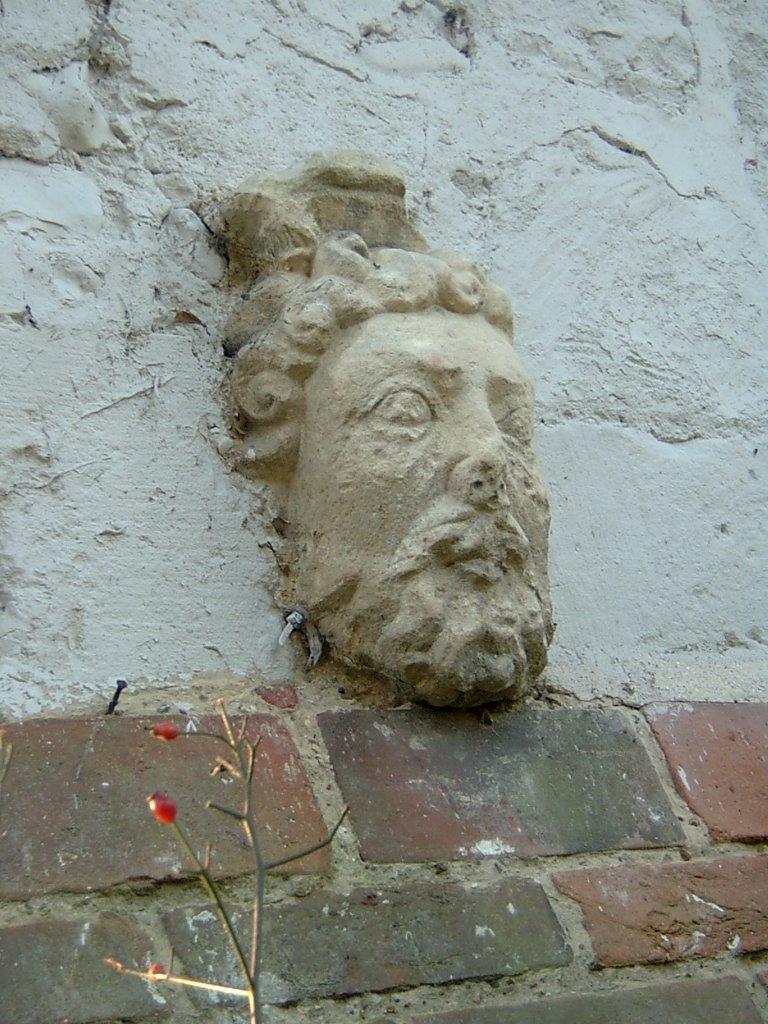
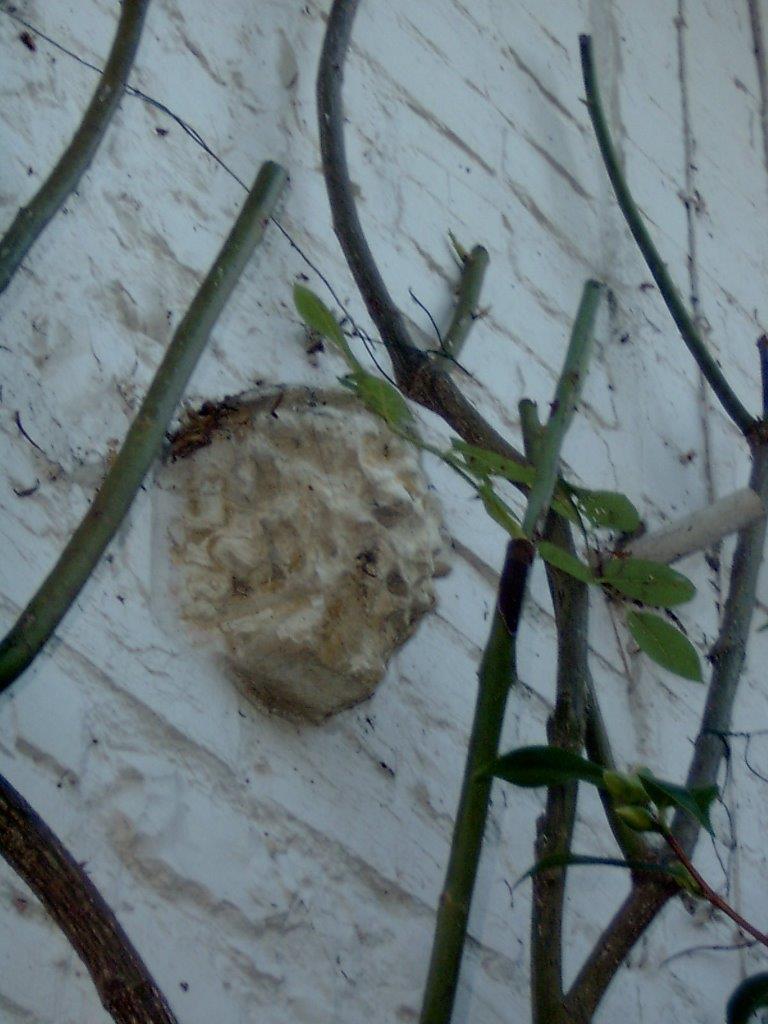
Sculpture in Binsted seems to have a theme. Attached to the wall of a cottage in Binsted are two pieces of sculpture, one showing a male face with wild hair and a horn, and the other a leafy boss or beard. They suggest the ‘green man’ theme or even the god Pan.
An early photograph of the cottage, from about 1870, shows them already attached. Local word of mouth says they were found in ‘The Minchins’ – the wood now called Wincher’s Copse – and calls them ‘Roman’, but James Kenny, Archaeology Officer of Chichester District Council, has said they are more likely to be Renaissance and to have come from Arundel Castle.
The Green Man, and the Knucker Hole spirits in their dragon-serpent form, appear on the Binsted Village Waymarker by Cowfold sculptor Janine Creaye, erected at the end of Church Lane opposite the Church in February 2017.
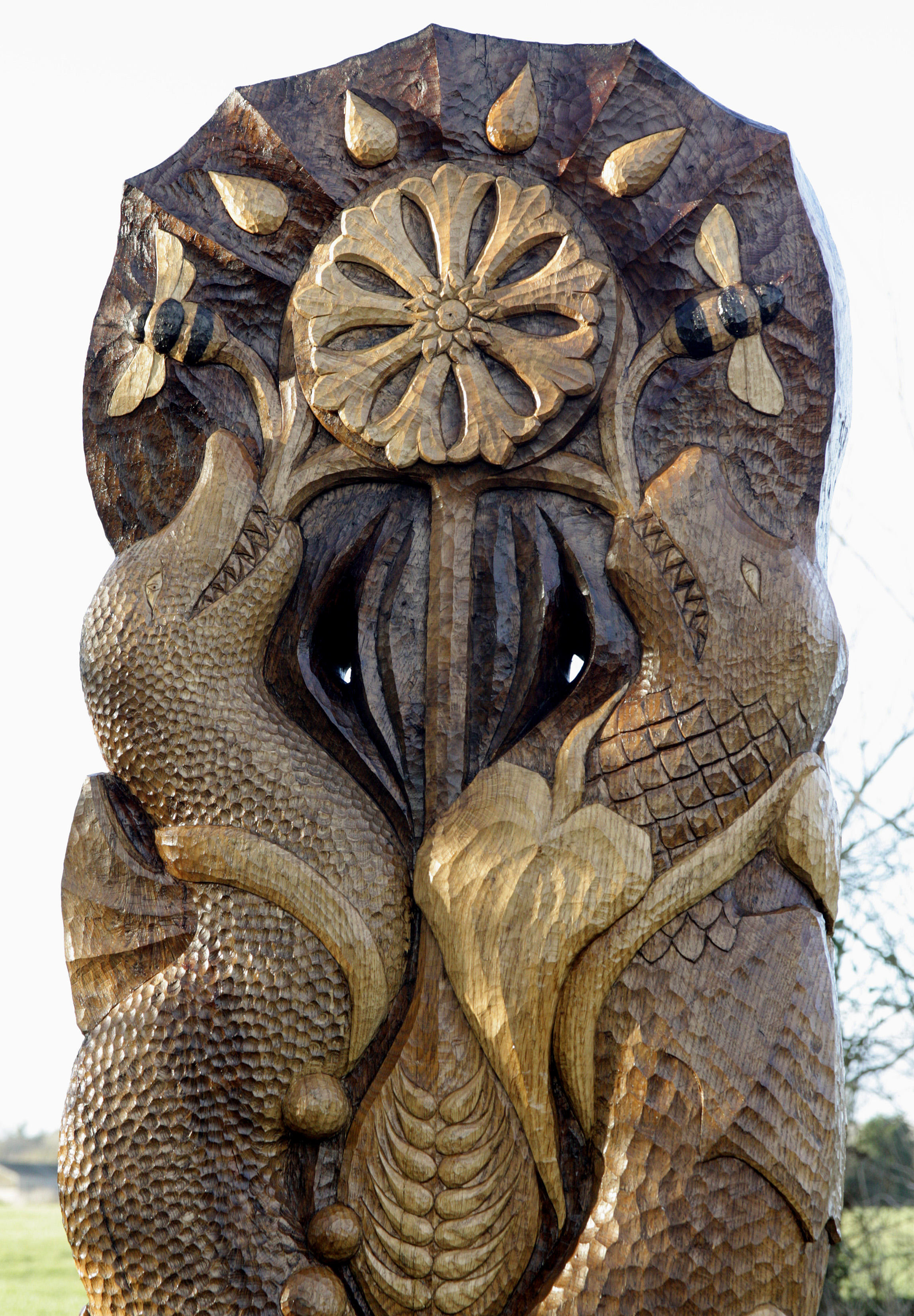
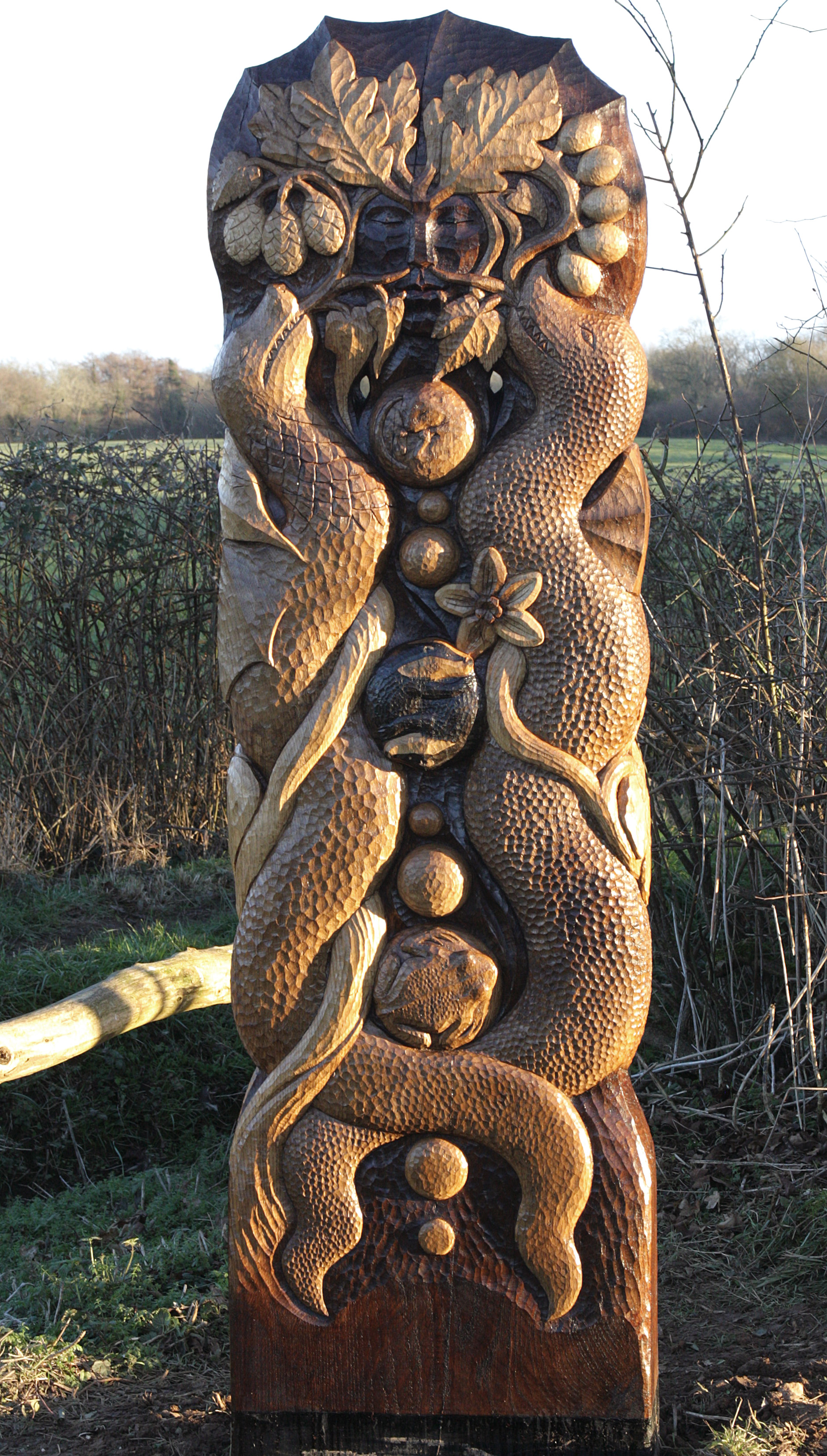
The Waymarker also features bubbles arising from the knucker pond - or perhaps the adjacent winterbourne stream - some of which bring toads, badgers, dormice, and other wildlife of Binsted are also seen - bees, cornflower, barley and hops, poppy, white and black bryony, and oak.
Together with the wolf carving and totem pole carvings at Mill Ball, made by Paul Sivell of the Isle of Wight, shown below, these pieces of art suggest a response to natural beauty and wildness. Paul Sivell’s website ‘The Carved Tree’ is at www.thecarvedtree.co.uk. Among many other carvings he has also made carvings on the Green Man theme.
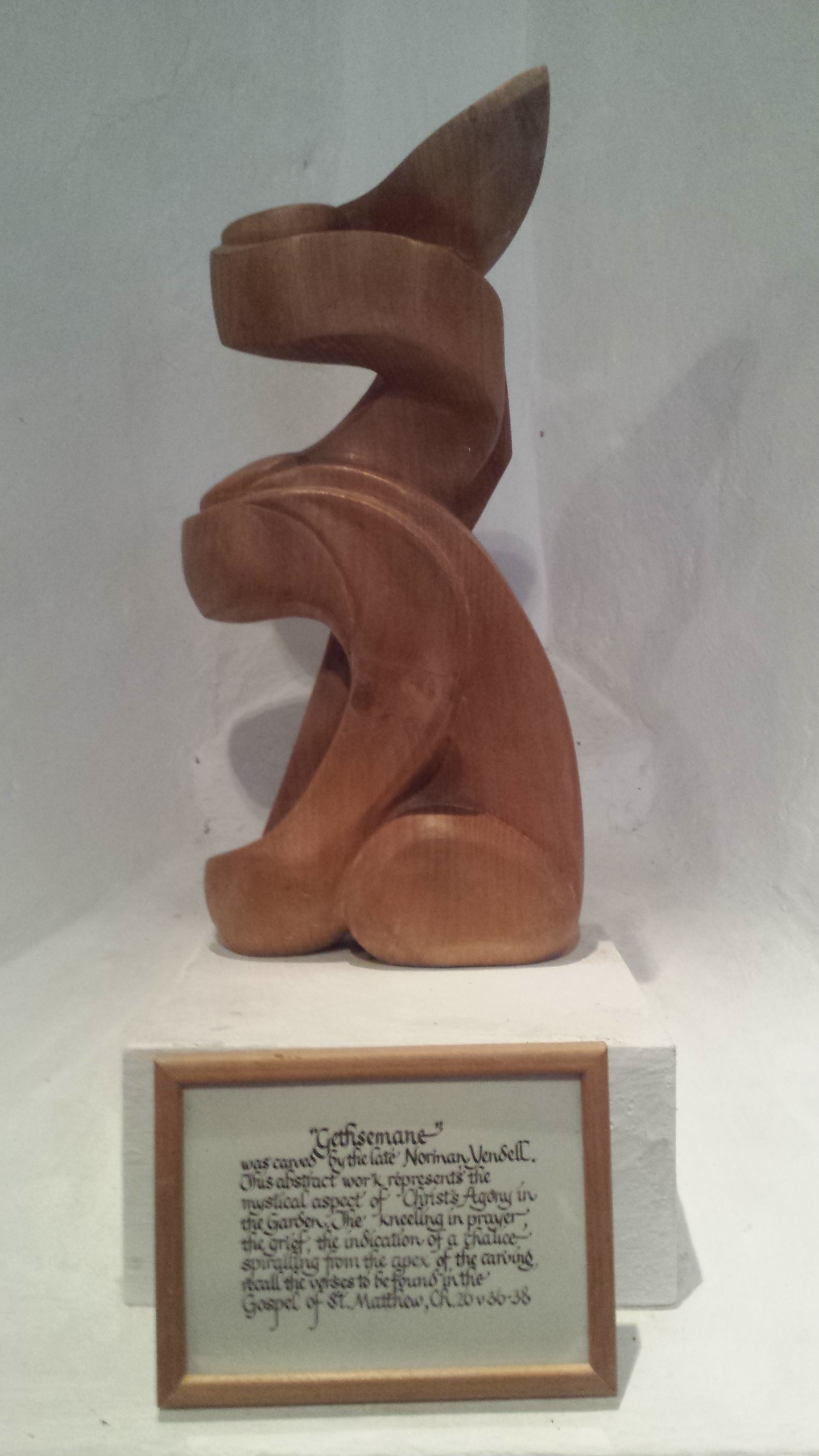
In Binsted Church, this wood sculpture by Norman Vendell of 'Gethsemane' was placed there by the daughter of Revd Drury the last Rector of Binsted to live in the Rectory. A semi-abstract representation of Christ's agony in the garden, its overall shape is also naturalistic and evocative of a figure of a hare.
Sculptor Janine Creaye has recently been commissioned to produce a green oak carved outdoor sculpture for a location in Binsted.

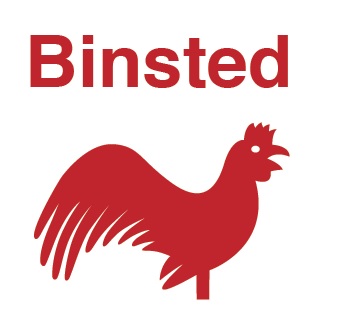

.JPG)